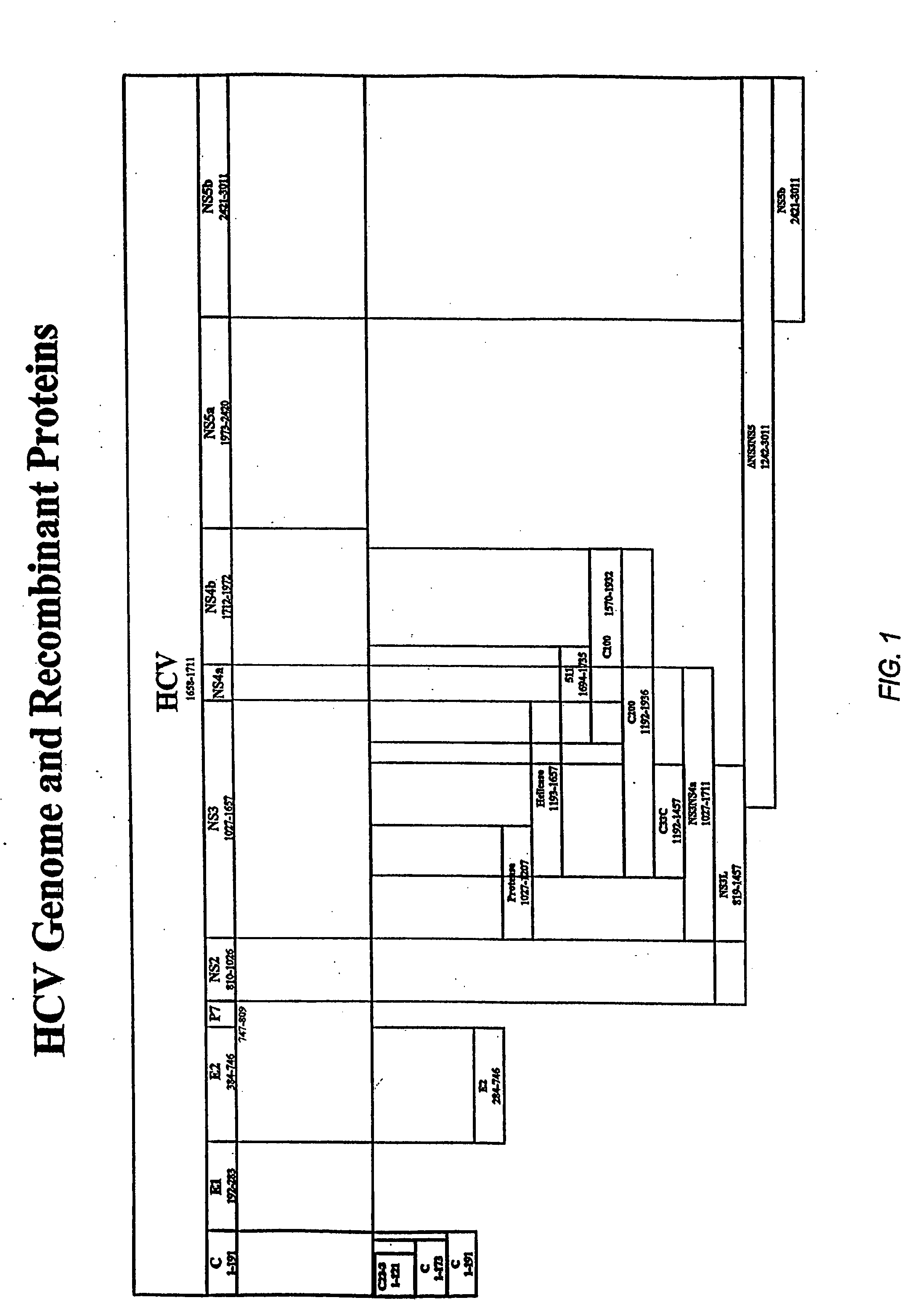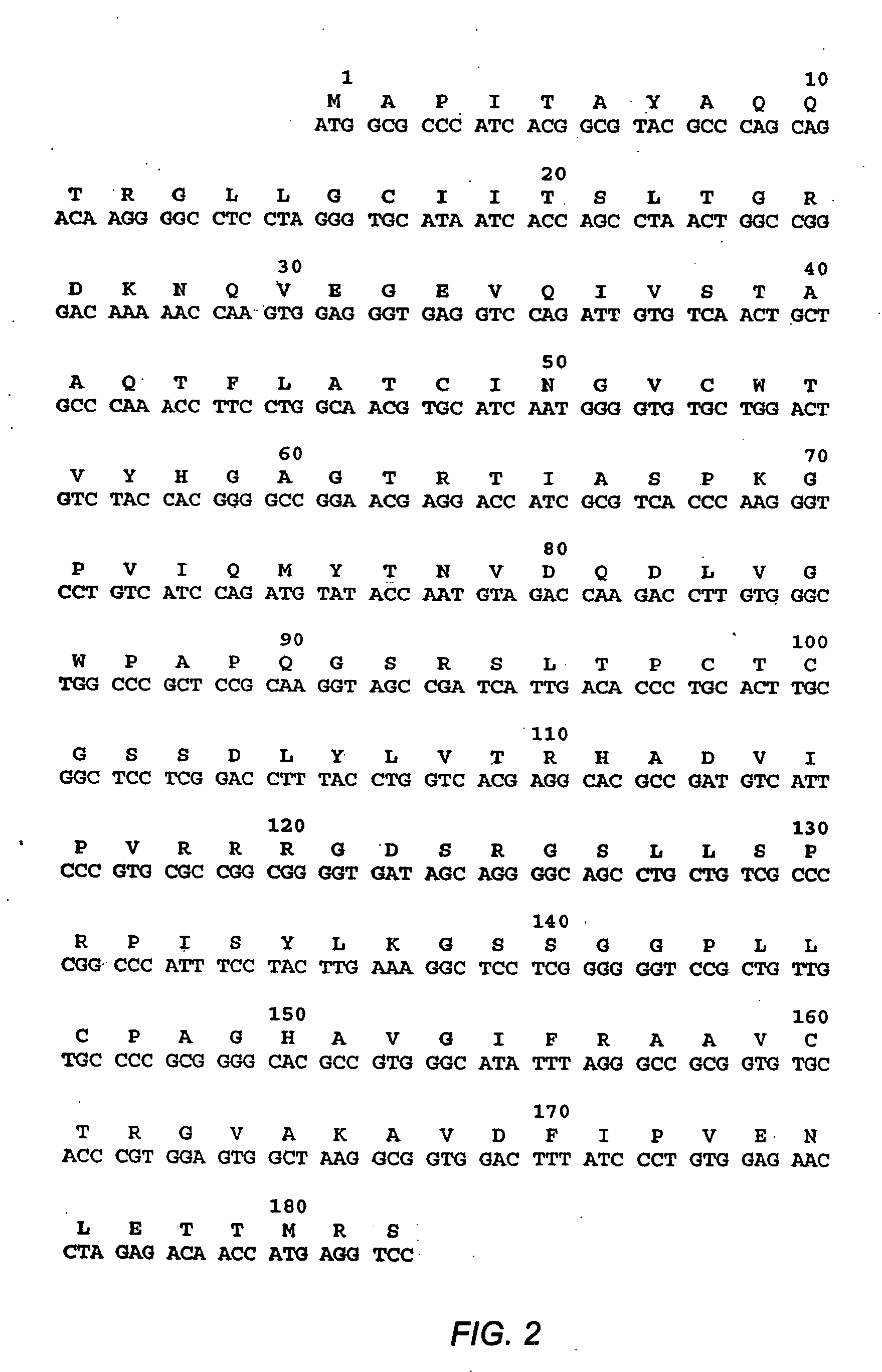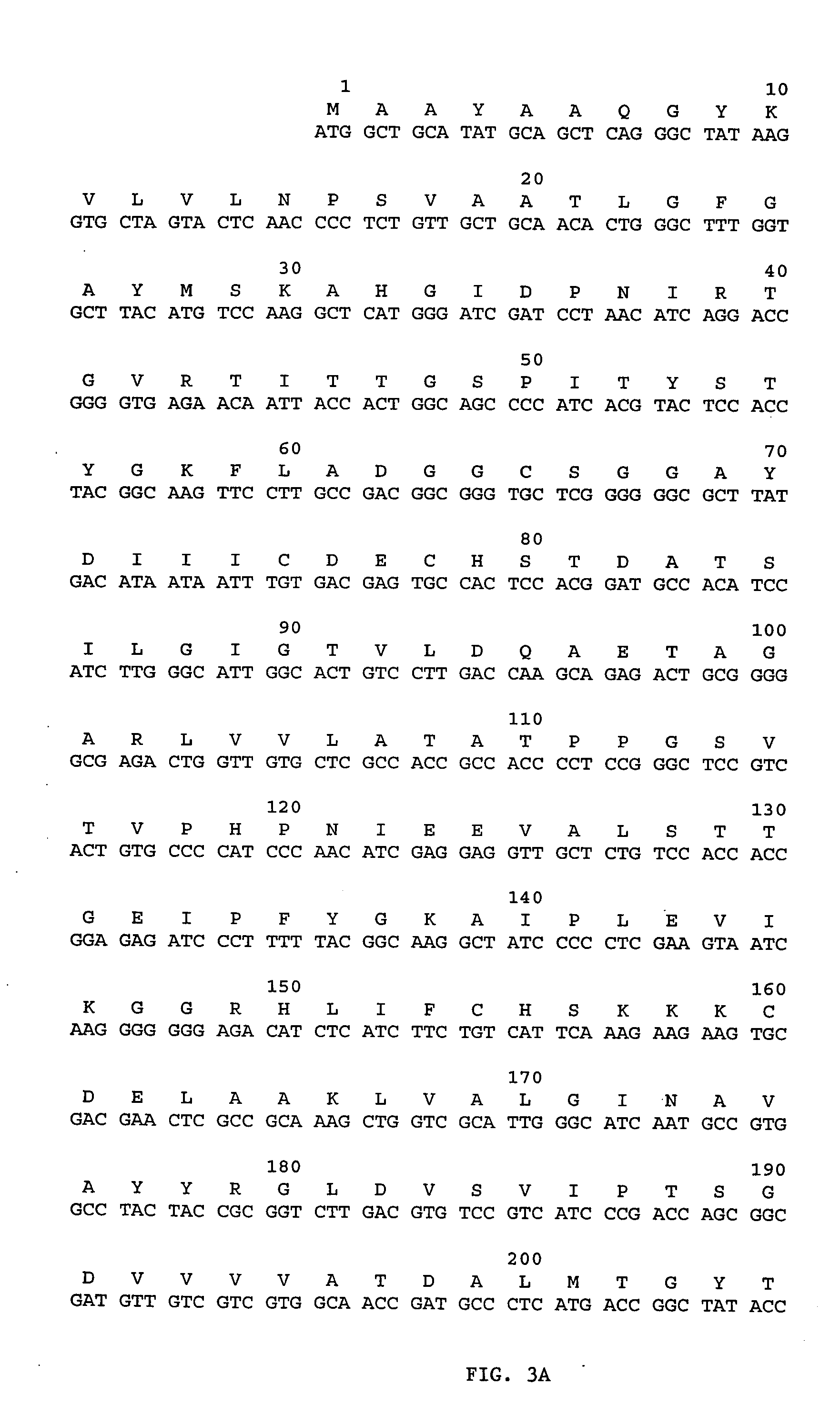HCV fusion proteins with modified NS3 domains
a technology of fusion proteins and hcv, which is applied in the field of hcv constructs, can solve the problems of limited success in the control of acute and chronic hcv infection, cirrhosis, liver failure, etc., and achieve the effect of stimulating such responses and increasing protection
- Summary
- Abstract
- Description
- Claims
- Application Information
AI Technical Summary
Benefits of technology
Problems solved by technology
Method used
Image
Examples
example 1
Production of NS3*NS4NS5aCore Polynucleotides
[0176] NS3* in the following examples represents a modified NS3 molecule. A polynucleotide encoding NS3NS4NS5a (approximately amino acids 1027 to 2399, numbered relative to HCV-1) (also termed “NS345a” herein) is isolated from an HCV. The NS3 portion of the molecule is mutagenzied by mutating the coding sequence for the His, Asp and Ser residues found at the protease active site, such that the resulting molecule codes for amino acids other than His, Asp and Ser at these positions and lacks NS3 protease activity. This construct is fused with a polynucleotide encoding a core polypeptide which includes amino acids 1-122 of the full-length polyprotein The core-encoding polynucleotide sequence is fused downstream from the NS5a-encoding portion of the construct such that the resulting fusion protein includes the core polypeptide at its C-terminus. The construct is cloned into plasmid, vaccinia virus, and adenovirus vectors. Additionally, the c...
example 2
Priming of HCV-Specific CTLs in Vaccinated Animals
[0178] The HCV fusion protein, NS3*NS4NS5aCore, produced as described above is used to produce an HCV fusion-ISCOM as follows. The fusion-ISCOM formulations are prepared by mixing the fusion protein with a preformed ISCOMATRIX (empty ISCOMs) utilizing ionic interactions to maximize association between the antigen and the adjuvant. ISCOMATRIX is prepared essentially as described in Coulter et al. (1998) Vaccine 16:1243.
[0179]Rhesus macaques are immunized under anesthesia. Animals are divided into two groups. The first group is infected with 2×108 plaque forming units (pfu) (1×108 intradermally and 1×108 by scarification) of rVVC / E1 at month 0. This group serves as a positive control for CTL priming. Animals from the second group are immunized with 25-100 μg of an HCV fusion polypeptide, as described above, that has been adsorbed to an ISCOM, by intramuscular (IM) injection in the left quadriceps at months 0, 1, 2 and 6. Cytotoxic ac...
example 3
Immunization With NS3*NS4NS5aCore Polynucleotides
[0180] In one immunization protocol, animals are immunized with 50-250 μg of plasmid DNA encoding an NS3*NS4NS5aCore fusion protein by intramuscular injection into the tibialis anterior. A booster injection of 107 pfu of vaccinia virus (VV)-NS5a (intraperitoneal) or 50-250 μg of plasmid control (intramuscular) is provided 6 weeks later.
[0181] In another immunization protocol, animals are injected intramuscularly in the tibialis anterior with 1010 adenovirus particles encoding an NS3*NS4NS5aCore fusion protein. An intraperitoneal booster injection of 107 pfu of VV-NS5a or an intramuscular booster injection of 1010 adenovirus particles encoding NS3*NS4NS5aCore is provided 6 weeks later.
PUM
| Property | Measurement | Unit |
|---|---|---|
| Immunogenicity | aaaaa | aaaaa |
Abstract
Description
Claims
Application Information
 Login to View More
Login to View More - R&D
- Intellectual Property
- Life Sciences
- Materials
- Tech Scout
- Unparalleled Data Quality
- Higher Quality Content
- 60% Fewer Hallucinations
Browse by: Latest US Patents, China's latest patents, Technical Efficacy Thesaurus, Application Domain, Technology Topic, Popular Technical Reports.
© 2025 PatSnap. All rights reserved.Legal|Privacy policy|Modern Slavery Act Transparency Statement|Sitemap|About US| Contact US: help@patsnap.com



